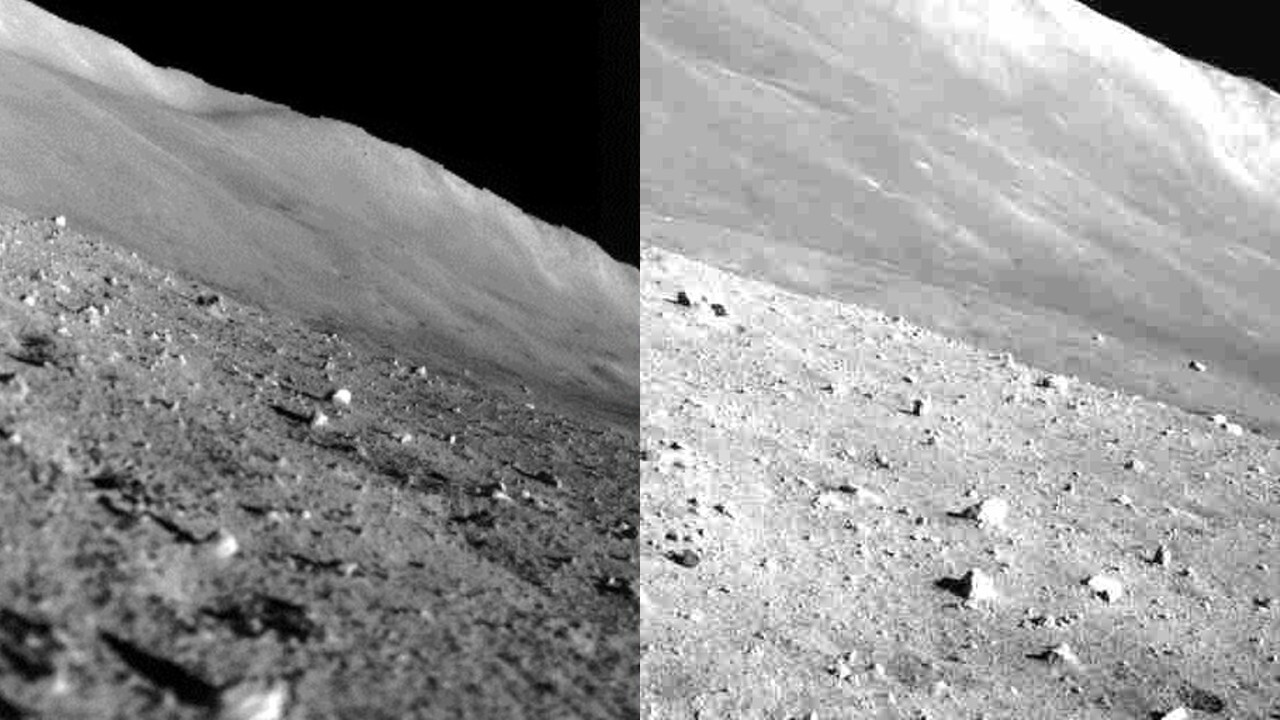
Japan's SLIM lander is alive after a long sleep on the moon.
SLIM, short for "Smart Lander for Investigating Moon," responded to a command from Earth after hibernating for nearly a month. Part of that downtime fell during the cold of the moon's two-week night, mission officials announced early Monday (Feb. 26) on X, formerly Twitter.
"Last night, a command was sent to #SLIM and a response received, confirming that the spacecraft has made it through the lunar night and maintained communication capabilities," wrote officials with the Japan Aerospace Exploration Agency (JAXA) in English. The electronics were operational despite surface temperatures being at 212 Fahrenheit (100 Celsius), the team wrote in Japanese in another post machine-translated by Google.
"If we continue to communicate, things will get even hotter, so yesterday I decided to communicate for a while and then take a break again," JAXA's post continued, appearing to be playfully impersonating the lander.
Related: Japan's SLIM moon lander photographed on the lunar surface — on its nose (image)
The lander is not only awake, but continuing to gather a bit of science. Fresh mission imagery on the mission's Japanese-language account shows a new zone of the moon "which was not visible last time", according to a Google machine translation of the X post. Images were taken using the mission's navigation camera, SLIM officials wrote in another post, although the team plans to only make contact again when local temperatures have fallen to safer levels.
It's been a wild ride for SLIM, ever since it made a precise touchdown on the rim of Shioli crater on Jan. 19. The lander ended up upside-down due to engine trouble, but fortunately its solar panels are still receiving energy from the sun, if at a reduced level. Facing westward, the reduced sunlight caused the mission to shut down shortly after landing, before reviving nearly 10 days later (Jan. 29) for a brief couple of days of operations that lasted until Feb. 1.
JAXA made the most of the brief operations time, scouting around the landing site using the spacecraft's Multi-Band Camera (MBC) in search of olivine and other minerals. It also photographed numerous pictures of rocks, which officials imaginatively named after dogs to indicate their relative sizes.
But the lunar night, which is roughly 14.5 Earth days long, saw no sunlight reach the lander at all. Lunar daytime hit the region around Feb. 15, but SLIM's unfavorable landing position meant that not enough sunlight reached the lander until this weekend.
The remarkable recovery shows that its electronics survived equatorial lunar nighttime temperatures of around minus 208 degrees Fahrenheit (minus 130 degrees Celsius).
SLIM has met its main and extended mission objectives of making a precision landing, sending two small rovers onto the surface for their own operations, and picking up science data in the surrounding area.







